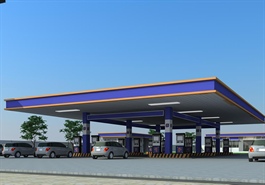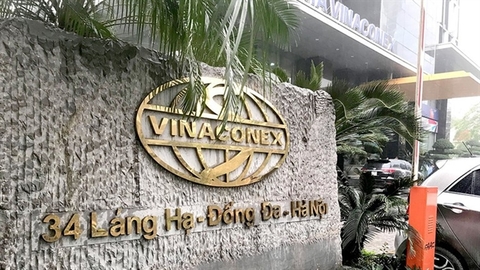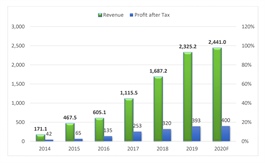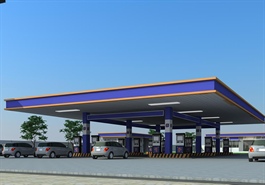Listed realty firms to enjoy fruitful last quarter despite disease, travel restriction
Listed realty firms to enjoy fruitful last quarter despite disease, travel restriction
Although there are some listed property developers worth investing in, challengers are still aplenty, especially as earning don’t normally surge until the final quarter of the year.
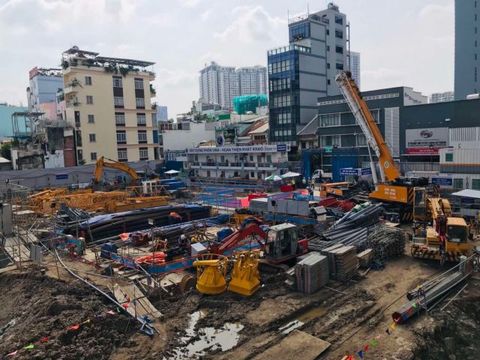
According to KIS Vietnam Securities JSC (KIS), the earnings of the real estate sector in the first half of the year were dull as the market was hit hard by external factors.
Listed real estate companies posted a 21.7 per cent annual drop in revenue in the first six months and post-tax profits of parent companies’ shareholders fell 12.7 per cent year-on-year.
All listed property developers have fulfilled 27.5 per cent and 27.7 per cent of their revenue and post-tax profit plans.
The companies also reported total net-debt on June 30 surged 50 per cent year-on-year. The listed firms with the highest amount of net debt were Vinhomes JSC, Novaland and Dat Xanh Group, whose net debts gained 153 per cent, 57.9 per cent and 107 per cent, respectively, compared to the first half of 2019.
KIS analysts said the difficulties for the real estate sector will not fade soon.
In the third quarter, the property market will stay dreary as social-distancing measures to fight the COVID-19 pandemic will make sellers stall sale events, they said.
In addition, buyers will be hesitant because they are still worrying about the future, they added.
Specialists at Agribank Securities JSC (Agriseco) said the property industry is among the worst-hit sectors during the pandemic as social distancing measures have disrupted sale activities and postponed construction.
Meanwhile, buyers are not rushing to purchase real estate products because the economic outlook is still quite gloomy, they said, adding resort, leasing and retail sections are the hardest hit and will take time to recover.
In addition, buyers are still tied-up by a number of legal bottlenecks that have remained unsolved since 2018, which will keep the number of ready-for-sale projects very low.
According to CBRE, the total supply of property outputs in the Ha Noi market in the second quarter dropped 39 per cent year-on-year to nearly 5,570 items and the quantity of sold items in the second quarter fell 27 per cent on-year to 5,100. Meanwhile, in HCM City, the total supply reached a five-year low of 1,644 items.
SSI Securities Corporation (SSI) reported that in the first six months of 2020, the trading volume of high-class apartments with the selling price of average VND60 million (US$2,590) per square metre dipped nearly one-third from the previous year.
Apartments with leasing price of more than $1,000 per month were also empty because of the COVID-19 pandemic. The average leasing price offered on the market was slashed by 20-25 per cent due to lower demand and spending on house leasing was also curbed.
Middle-class apartment leasing interest rates have dropped by 30-50 basis points since the outbreak began. The rates in HCM City range from 4.5 per cent to 6.2 per cent per year and from 4 per cent to 5.4 per cent per year in Ha Noi.
Agriseco also noted that the financial condition of real estate firms has worsened, therefore, companies have had to borrow more to maintain their operations.
On June 30, the total outstanding debt of the real estate sector increased by 16 per cent in six months to VND161 trillion ($6.95 billion). The ratio of total outstanding debt to total revenue also hiked to 0.87 by the end of the second quarter from 0.67 compared to 2019. Moreover, the ratio of borrowings to equity capital jumped 54 per cent in the second quarter – the highest quarterly gain since the beginning of 2019.
Second-half expectations
According to KIS analysts, increased discounts and gifts, and due date extensions will be key to boost local market demand, while top-leading companies such as Vinhomes and Khang Dien House Trading and Investment JSC will record earnings surge in the last months of the year as they are about to complete selling thousands of apartments
KIS also expected lending rates provided by commercial banks will remain low until the end of the year. The average lending rate for house buying was 11.4 per cent in the last quarter – unchanged from the previous one. The rate fell 20-40 basis points for one-year loans in July and early August because banks wanted to boost house-purchasing power while borrowing demand in other sectors was weak.
According to SSI Securities, domestic market studies have shown 38-40 per cent of the population consider real estate products a safe investee.
The growth of the market depends on the infrastructure development and interest rates, the company said, adding low-storey buildings are more attractive to buyers because they can easily obtain the land use right certificate when purchasing.
Agriseco specialists said listed companies perform better than the market average and their stocks are good investees as their projects are often licensed, debt-to-equity ratios are low and sale volumes are often optimistic.





.jpg)
